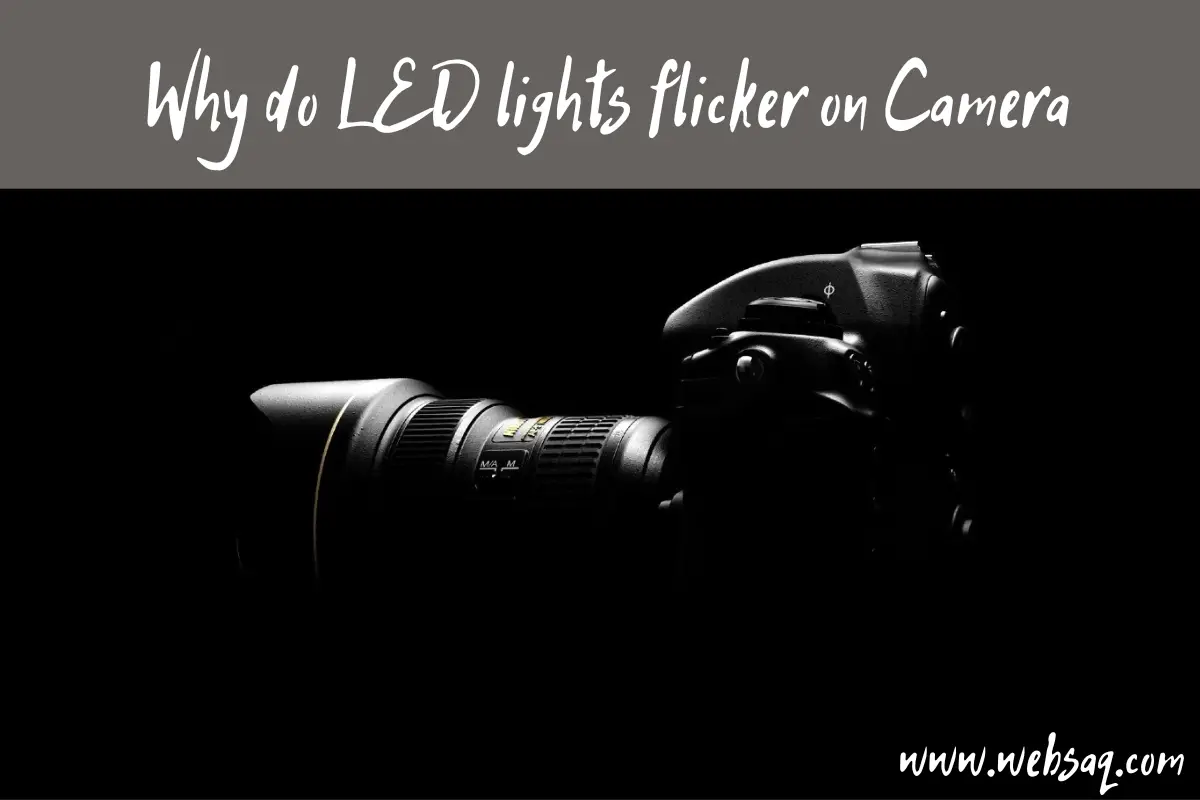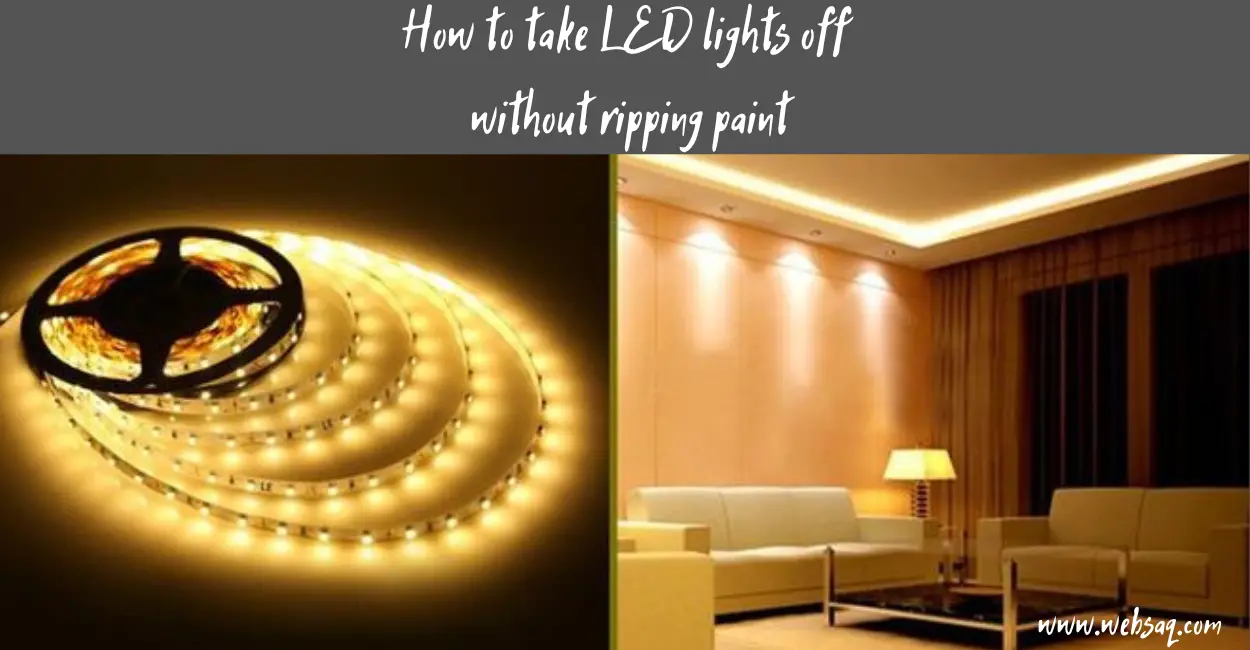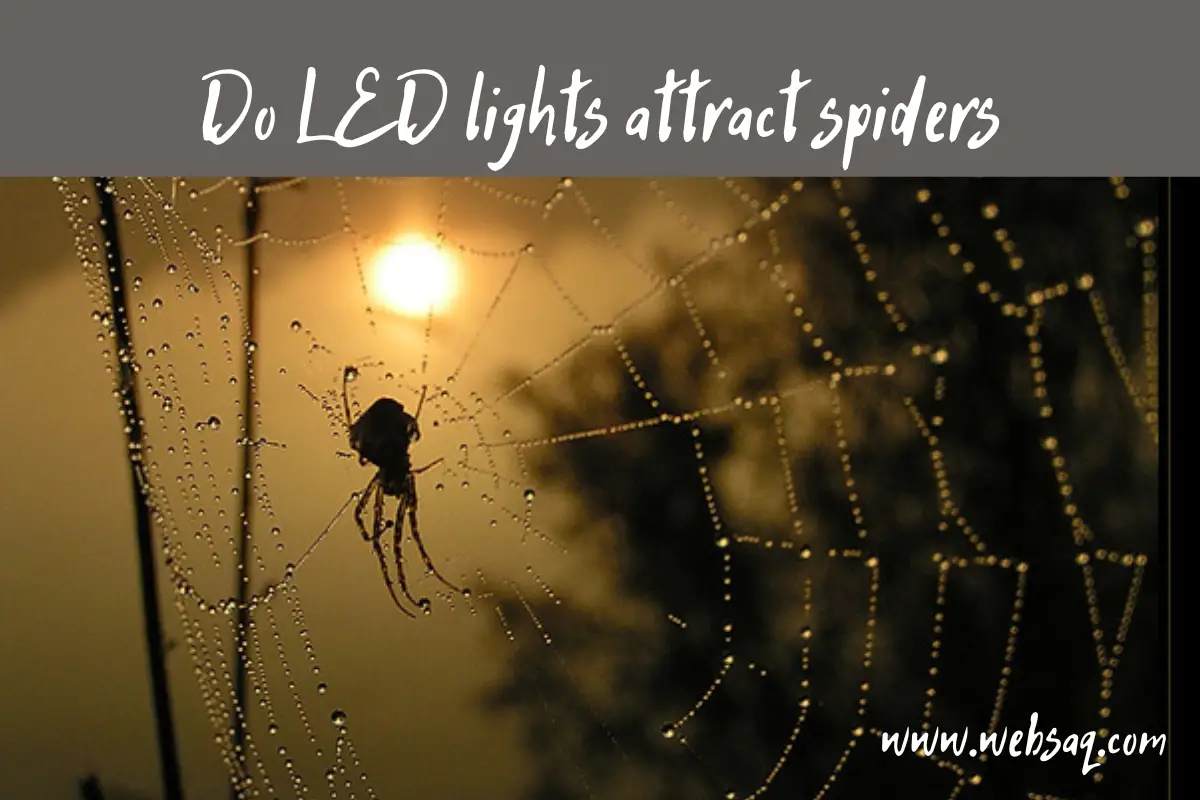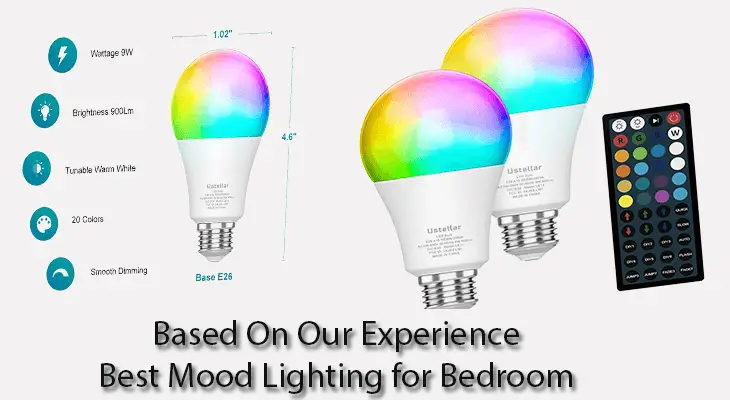When seen via the camera lens, you may notice flickering LED lights. Lighting is extremely important in the field of photography, yet flashing lights might be difficult for the photographer.
However, flickering LED lights on the camera are entirely normal and easily repairable. For dimming, some LED lights employ pulse width modulation. If your LED lights flicker when connected to a DC power supply, they may be using pulse width modulation for dimming.
This post is going to clarify the reason LED lights flicker on camera, as well as how to fix the problem.
You may have purchased the most recent smartphone or iPhone, yet you’ve discovered a flicker in the movies you watch. Furthermore, the video could have been recorded with specific settings, resulting in this issue.

But there is some good news! In most cases, you can resolve this issue with just a couple of simple steps.
So, here’s how to repair flickering lights on a camera! But first, let’s explain what the term “flicker on camera” means.
What makes the camera flicker?
Flickering is technically defined as rapid changes in exposure in our frames. In other words, LEDs emit light that interferes with recording. Typically, pulsations can be seen throughout the picture. It is usually more noticeable in the image’s bright parts.
At first glance, it appears to be caused by a sharp drop in light intensity. And that might undoubtedly be one of the reasons.
When an LED light generates flickering on the camera, the recorded footage looks to be of inferior quality, according to everyone. Nobody wants to flash on camera since it distracts the viewer’s eyes. Furthermore, the effect renders the scene unappealing to view.
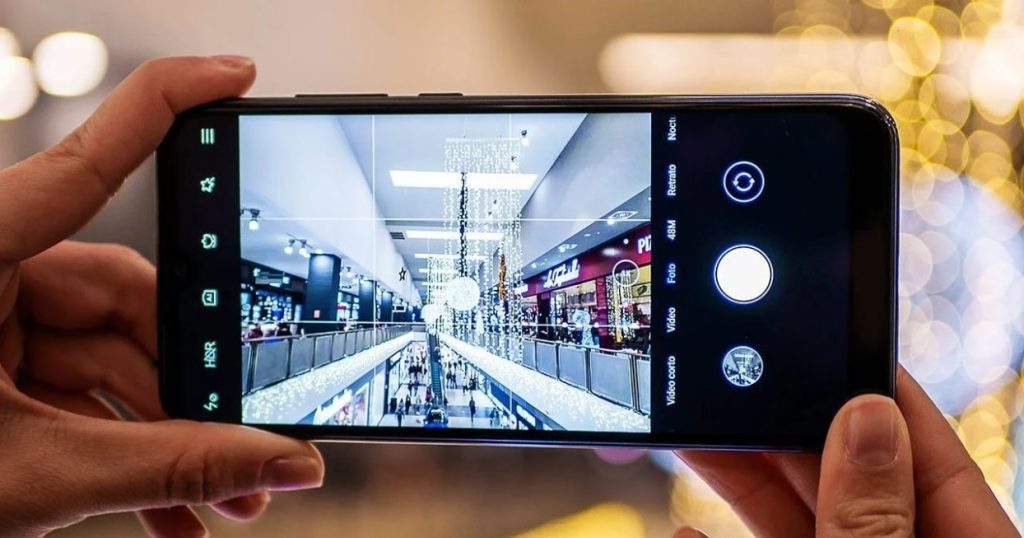
Many people have attempted to solve the flicker problem for good. The encouraging aspect is that they succeeded. Specific equipment, such as the flicker meter, is available to monitor the changes in voltage that generate the strobe lighting effect.
Nonetheless, when filmmakers fail to implement adequate safeguards, this problem will always occur.
To summarize, flicker is a visual perception effect. It’s a problem that spoils a video and takes up valuable time to rectify.
Another reason LEDs flicker is because of their power supply. Rather than providing a continuous stream of current, the power supply may be divided into intermittent pulses of current.
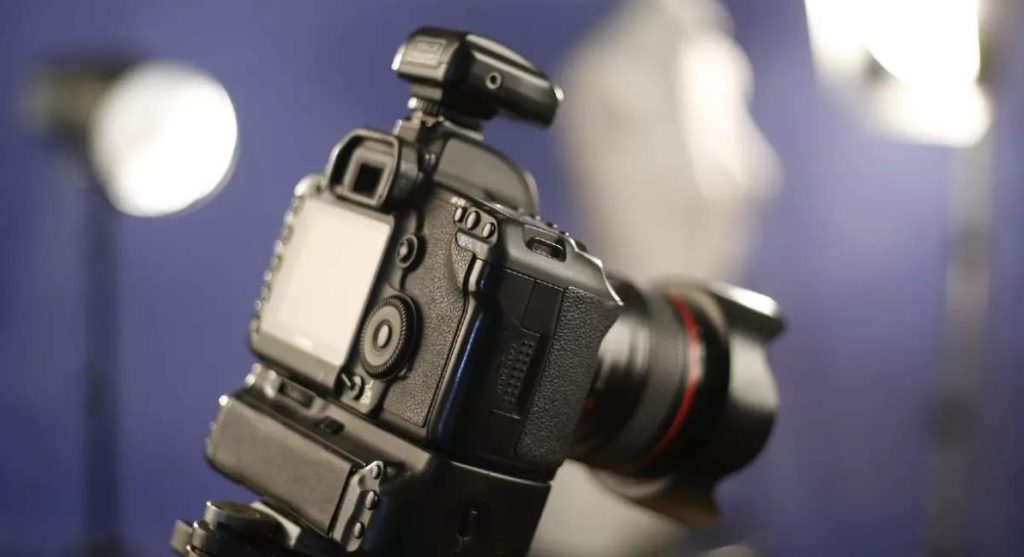
Why do LED lights flicker on camera?
LED lights flicker on the camera because of the difference in frequency between the light and the camera’s frame rate.
LED lights operate on direct current, which means that they turn on and off rapidly. This on-off cycle can create a flickering effect that is not visible to the naked eye but is captured by the camera’s sensor.
When the camera’s frame rate and the frequency of the LED lights are not in sync, the flickering effect becomes more pronounced and visible in the footage. This flickering effect can be reduced by adjusting the camera settings or using specialized LED lights designed to minimize flicker.
To put it another way, LED flickers are caused by the number of cycles per second that an alternating current performs.
Many LED lights flicker incessantly, yet the human eye is unaffected by this. Variable recording rates and sound settings are also crucial.
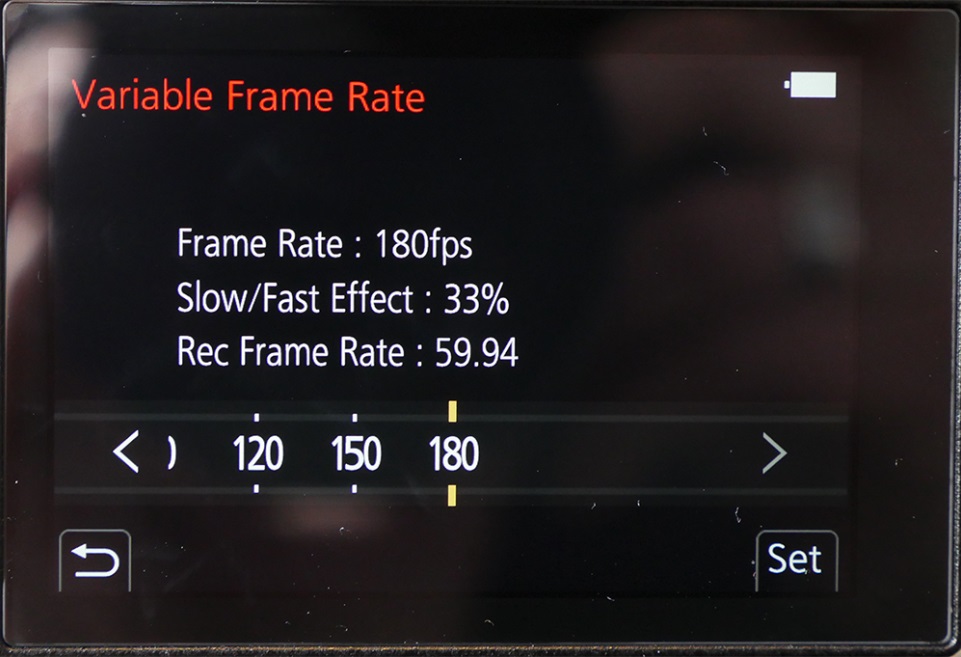
Many people are familiar with the flickering effect since they have a slow-motion camera. Slow motion produces significantly darker films than normal videos. As a result, you can notice the strobe in all its beauty!
Try it out by changing the setting on your standard camera from 30 fps to 60 fps. As an outcome of this, you will see dimmer videos because of a similar reason.
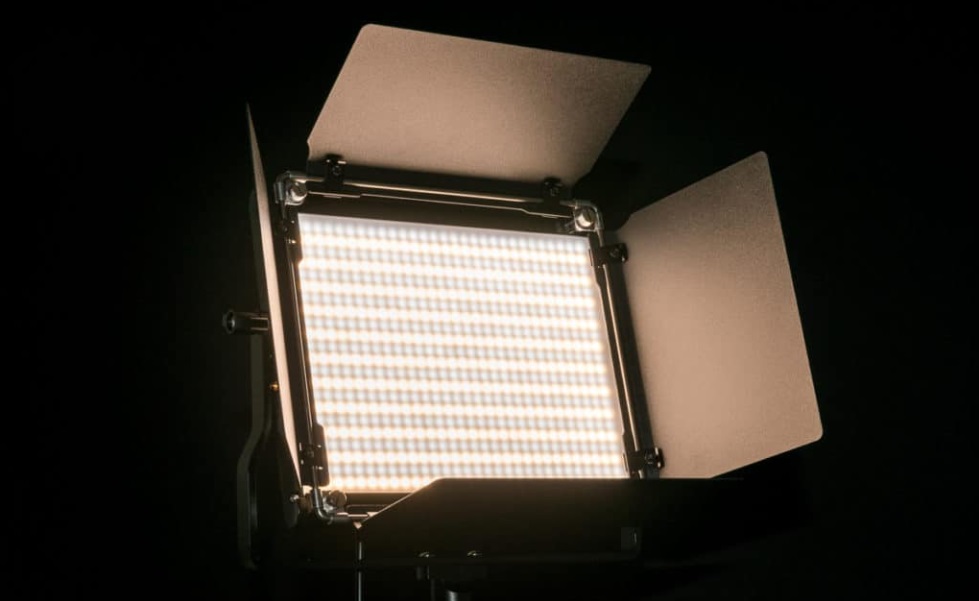
How do I stop my LED camera from flickering?
Here’s how you can stop light flickering on the camera.
Camera setting
The first source of flicker is a quirk in how today’s camera settings work. The diaphragm in modern lenses, as you may know, is always open. In simple terms, the final phase is merely electronically mimicked to calculate exposure.
The lens of the camera lifts the reflection when filming. It also shuts down the diaphragm to a preset value. Everything returns to where it started after the recording. When the diaphragm shuts for shooting, it never closes precisely, in terms of both timing and size.
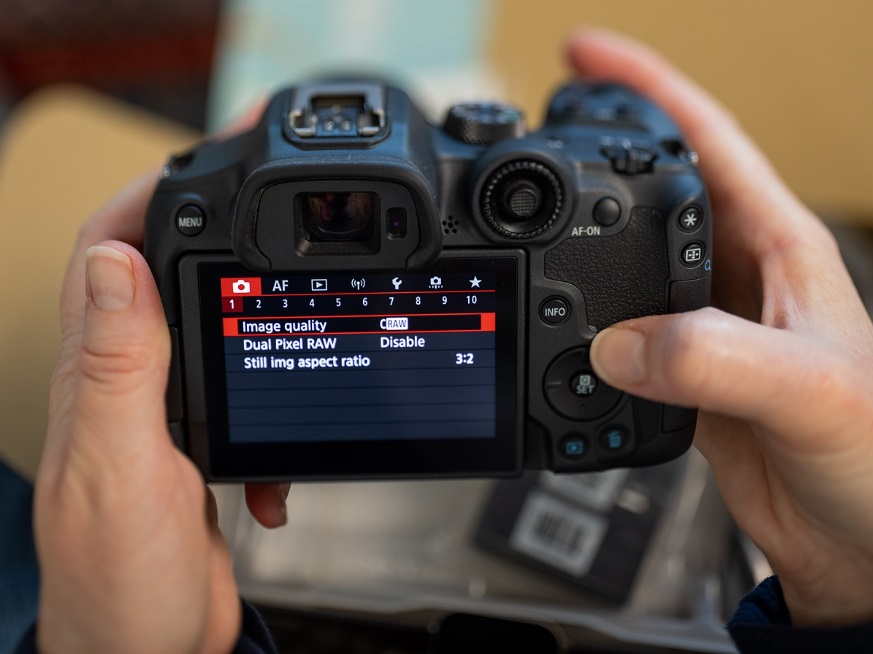
This can result in a very tiny exposure variation between two consecutive photographs. To avoid this issue, reduce the footage’s rate of motion to 25 or less per second.
The second cause of the flickering light effect is the way the photo sequence of the video is revealed. This refers to the shutter speed.
Shutter speed refers to the length of time that the camera’s shutter remains open while taking a photograph. It is measured in seconds or fractions of a second and determines the amount of light that enters the camera’s sensor.
A faster shutter speed means that the shutter opens and closes more quickly, allowing less light to enter the camera and resulting in a darker image. A slower shutter speed means that the shutter remains open for a longer period, allowing more light to enter the camera and resulting in a brighter image.
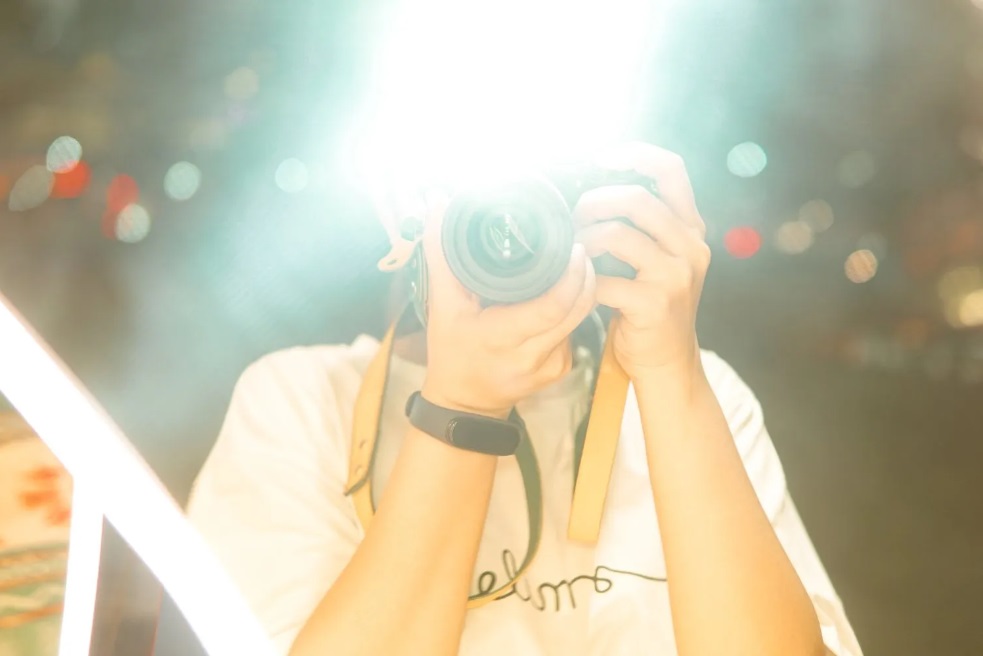
Shutter speed also affects the amount of motion blur in an image, with faster shutter speeds freezing action and slower shutter speeds creating a sense of motion blur.
You can adjust the shutter speed to an additional number of 50 or 60. The distinction is determined by the location of the recording. In the US, use a multiple of 60. Otherwise, an additional number of 50 will suffice—1/50 or 1/100 of a second, for example.
The difference in current hertz frequency is what makes this work. If you’re unsure of what shutter speed to use, go to the Red Flicker Free website to learn what shutter speed is best for every frame rate and energy frequency.
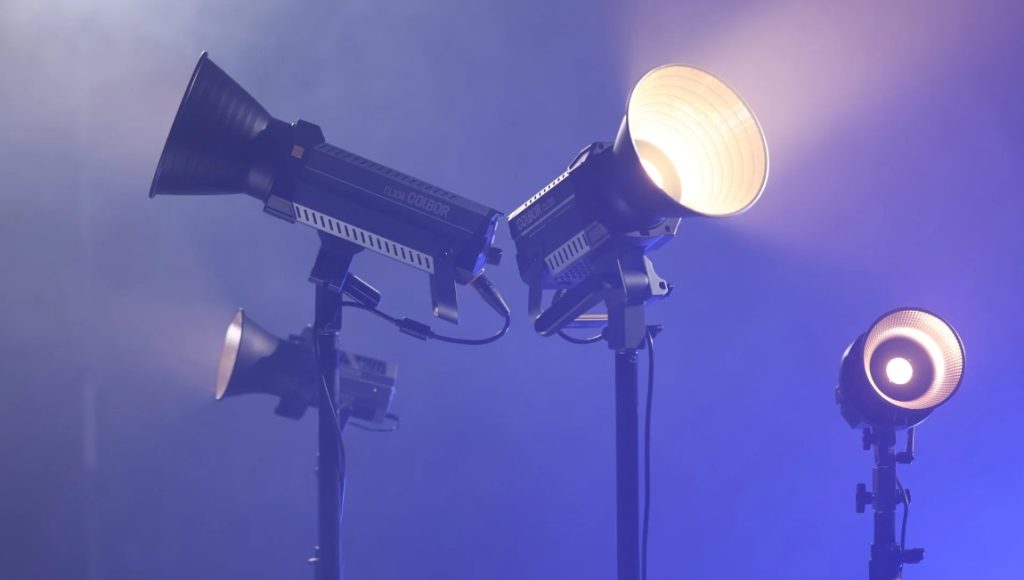
Using LED video lights that don’t flicker
Use slow-motion lighting for the best results. As you might expect, they stop light flickering effect without ever occurring. Fluorescent lighting has become popular over time.
However, they cause LED lights to flicker. As a result, some business owners put flicker-free LED lights in the marketplace. They are available for both commercial and residential use. In general, flicker-free LED lights are distinct. Briefly, regular management of the device’s power is critical.
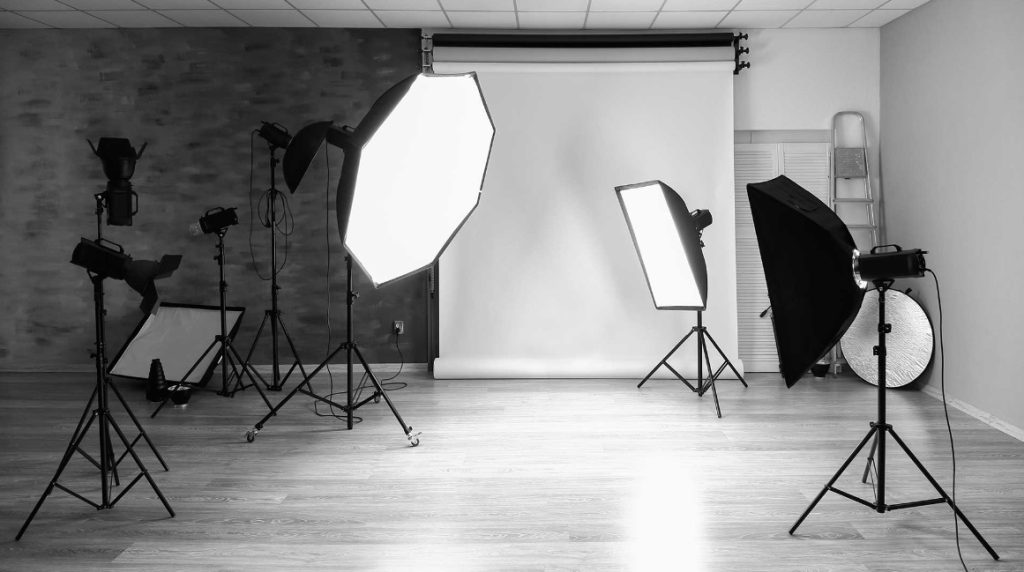
Overall, this guarantees the LED’s non-fading power. As a result, these items are more efficient and safer to use. They can, in particular, avoid associated illnesses. If you intend to use a digital camera indoors, you should invest in several flicker-free LED lights.
In the long term, you won’t have to deal with the numerous problems that ordinary lighting poses. You are going to have ample opportunity to focus on the real content quality once you have eliminated the flicker.
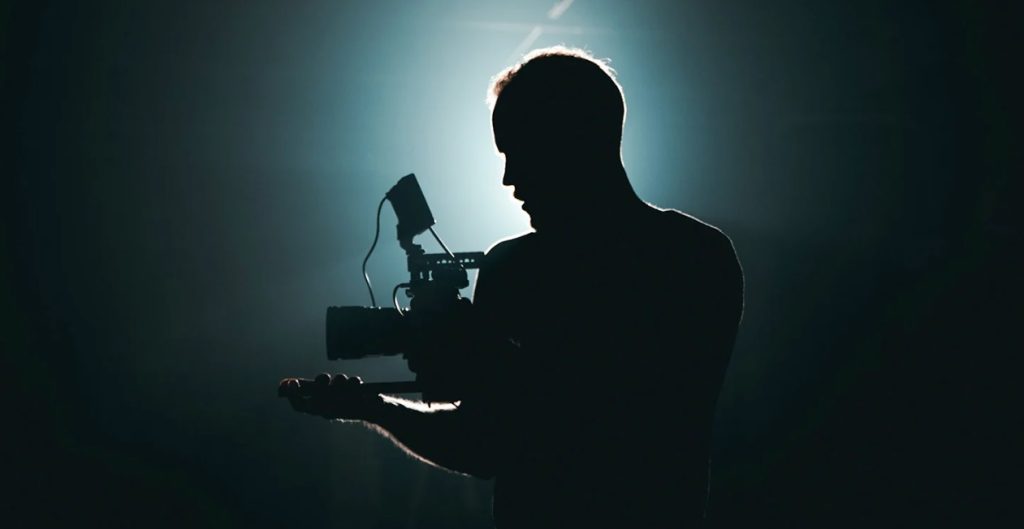
Using a natural light source
Shooting during the day is the easiest and most cost-effective approach to reducing flicker or strobe. Specifically, use direct sunlight as your artificial light source. Flickering is most commonly seen with fluorescent and incandescent illumination. But the sunshine does not flicker.
Some factors, of course, can have a dimming effect. Low clouds, for example, can swiftly cover the shooting area. In this scenario, as previously said, you need to alter the video camera setting.
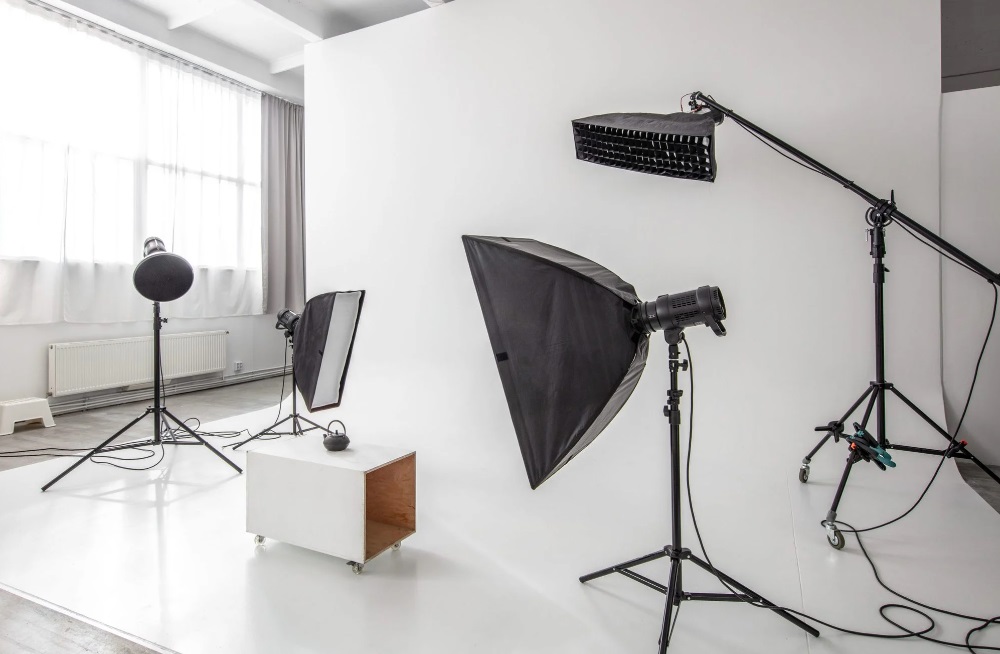
You can still debug your gadget by switching from NTSC to a PAL video stream. You should not have any further issues. However, you might need to carry out this operation each time you power on the device.
With natural light, video creators and YouTube users can employ reflectors and diffusers. Furthermore, the optimal times to record the footage are in the early morning and about 5 p.m. Of course, the best time will vary based on where you are located and the weather.
Alternatives to fix LED light flickering
Here are some helpful hints for avoiding or quickly resolving ways to fix flickering lights.
- If you light a lamp with a battery, the flicker goes away.
- Only apply the slow-motion option outside. Possibly during the day rather than at night. Create a slow-motion effect afterward in post-production.
- If nothing else succeeds, attempt to alter the ISO. One of the numerous benefits of digital cameras is the ability to alter the sensitivity between photos.
- When outdoors, constantly protect your camera to keep it dry. Even if it isn’t pouring at the time, you begin filming. You won’t be able to accomplish it once it starts pouring.
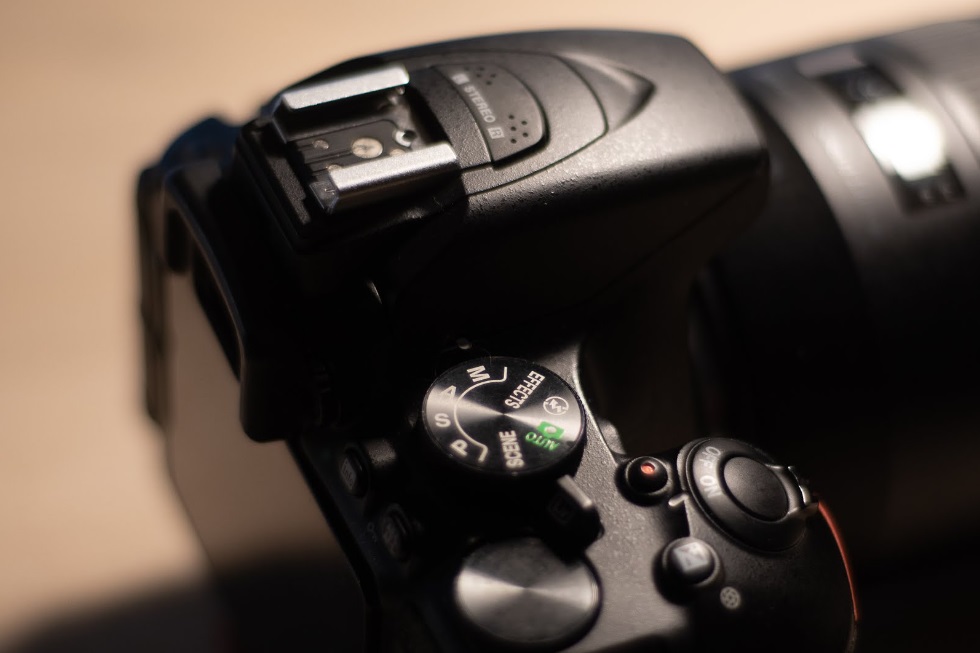
Do LED lights mess with cameras?
Yes, LED lights can cause flickering in photos and videos when using certain types of cameras.
This is because LED lights emit light in pulses, which can interfere with the camera’s shutter speed and cause flickering. However, some cameras have features or settings that can help reduce the effects of LED flicker.
Flickering LED light FAQs
No, LED lights that are designed to flash or strobe are not necessarily dangerous. However, prolonged exposure to flickering lights can cause discomfort or even trigger seizures in some individuals with photosensitive epilepsy.
It is important to use caution when using flashing LED lights and to be aware of any potential risks.
Yes, incandescent bulbs flicker can be made to strobe by using a dimmer switch or by rapidly turning the power on and off.
However, LED lights flickering are more commonly used for strobing effects in video content due to their ability to turn on and off quickly and their energy efficiency.
Incandescent bulbs, like every other artificial light source, flicker. This occurrence, however, is not visible on a camera.
This is because these incandescent bulbs operate on a different premise than LED bulbs. Incandescent bulbs use a filament that turns white-hot to produce heat and light.
To ensure that the light source does not flicker on camera, check its specifications for a high refresh rate or a high flicker frequency driver.
A refresh rate of at least 120 Hz is recommended for video content, and a high-frequency driver can help eliminate any visible flicker.
Additionally, you can test the LED light by filming it with a camera that has a high frame rate and checking the footage for any flickering.
LED illumination flickering in the clip has little connection with the quality or state of the LED lights.
You can be confident that the LED lights are functioning properly. Your only issue ought to be once you can observe how the LEDs flicker with the human eye.
A flashing light bulb that you can observe with your own eyes indicates that something is wrong with either the LED bulb or the circuits.
When your eye cannot perceive the LED flickering and the LED isn’t flickering quickly enough, your brain can nevertheless pick up on this strange light effect and induce headaches, nausea, and vision issues.
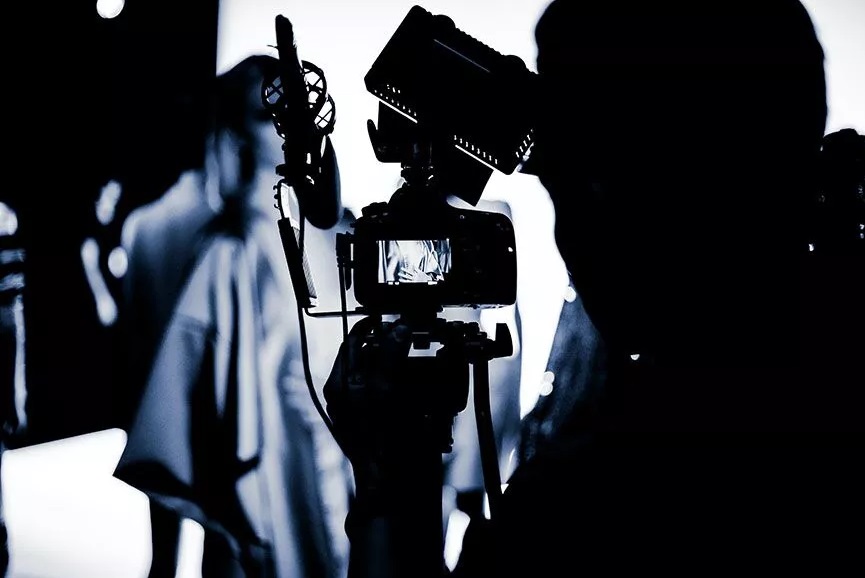
If besides learning why do LED lights flicker on camera, you would like to know how long they can stay on, please open the link and read our post about it.
Conclusion
LED lighting is the newest photography craze. They provide additional natural-looking illumination that can result in some truly stunning photographs.
However, one major fault with this new technology is that LED lights are prone to flickering when switched on and off, which is a serious issue for photographers who require constancy in their illumination.
But there is good news: all the approaches discussed above can be used to lessen and fix LED flicker shown in our movies.
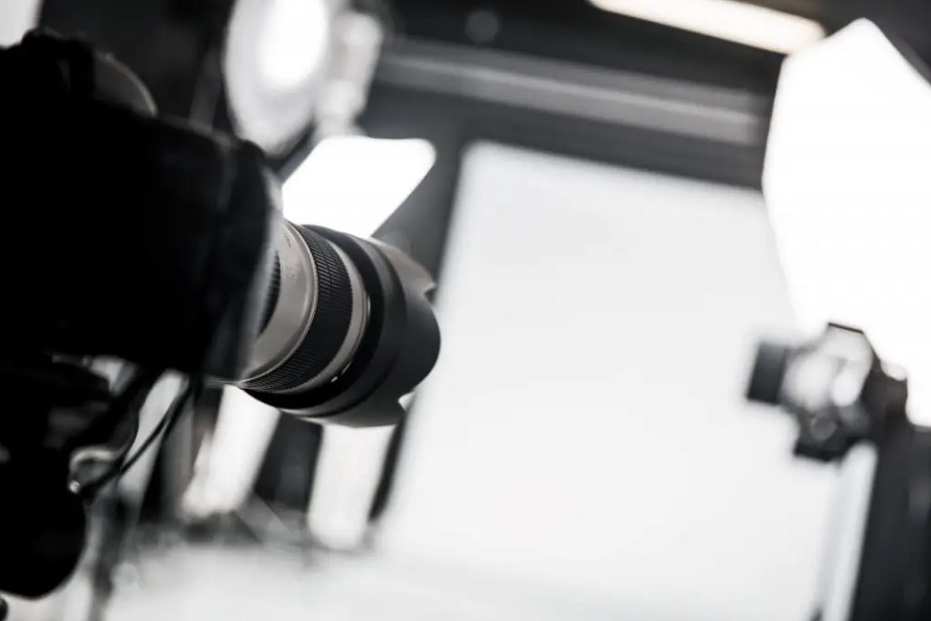
If they still don’t function, you’ll need to change the bulbs because they may have a blinking problem that you’re not aware of. The glowing, hot filament within the bulb produces light. A flicker meter is required to detect flickering. This is simply a piece of specialized equipment that can identify how a lighting source creates flickering.
Do you want to know more on why do LED lights flicker on camera? If so, please follow the link.

Here, I provide valuable insights into the lighting industry, drawing from 12 years of experience. My aim is to share useful and practical tips, life hacks, and comprehensive product reviews. I hope that collective expertise, advice, and recommendations prove beneficial to you.

